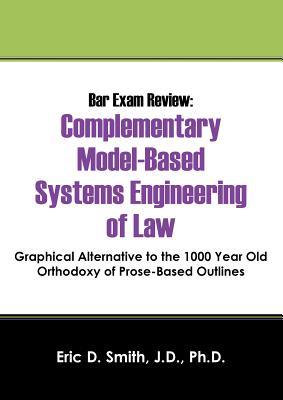
Bar Exam Review: Complementary Model-Based Systems Engineering of Law - Graphical Alternative to the 1000 Year Old Orthodoxy of Prose-B
Description
Learn the Law Graphically Learn the simple techniques that summarize the black letter law in every legal subject Easily determine and remember the key words that you must know in order to accurately answer MBE questions and essay questions on the Bar Examination See the diagrams that resolve recurring ambiguities in prose-based descriptions of the law The great truth of the Bar Examination is that, on stepping within the examination hall, either 'you know the law, or you don't.' There is no longer any chance to sit calmly, recall the law, contemplate the law, trace the logic of the law, or innovatively combine its different elements. During a Bar Exam, one is principally reacting from concepts that are now in-built as part of one's own being. There is no time to recall prosaic outlines on every legal subject. Enticed to study the law as a non-traditional 'correspondence' student, Eric D. Smith perceived the difficulties in learning the law using conventional summaries. Being outside the traditional law school environment, he did not adopt the outline-based approach, but rather resolved to only utilize drawing software to form and improve his personal diagram-based mnemonic tools. His full set of visual aids is reproduced here to facilitate basic legal education for everyone. "As I began my legal studies in 2007, it became clear to me that an opportunity to innovate on the presentation and understanding of the law was open. Instead of basing my legal studies on the 1000 year old tradition of prose writing, which has only lately been augmented in a limited way by the flow chart approach, I chose to base my outlines of the law solely on diagrams, which I would create and repeatedly modify and hone in Microsoft Visio software. The idea was that the human mind thinks in pictures, and, that under the stress of the bar examination, the mind could more naturally summon a picture containing the answer, instead of attempting to remember innumerable paragraph.
